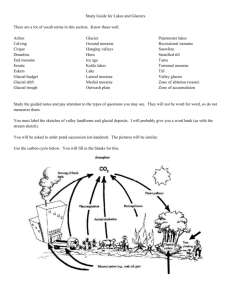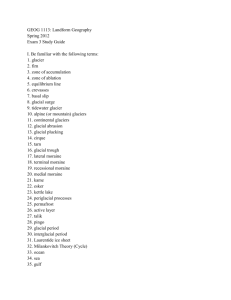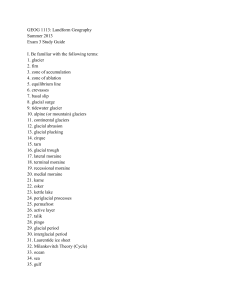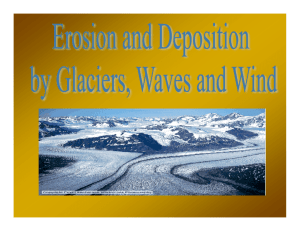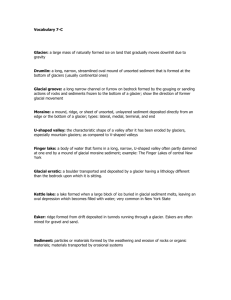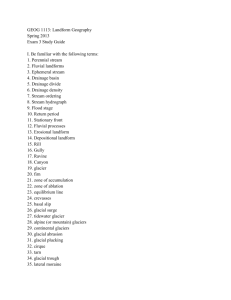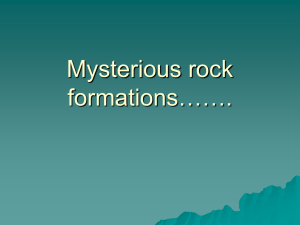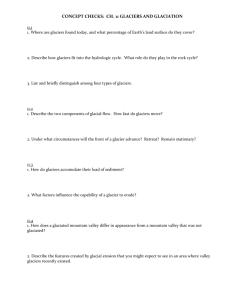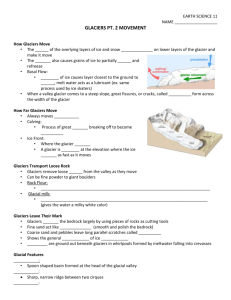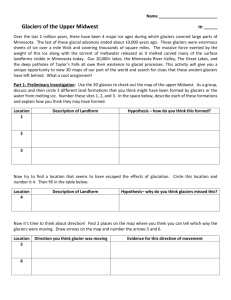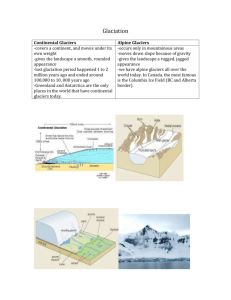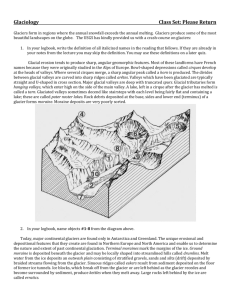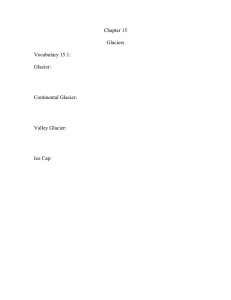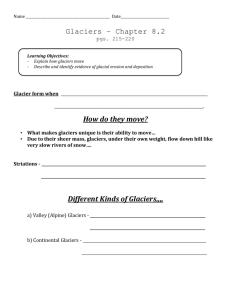Erosional and depositional features due to glaciation
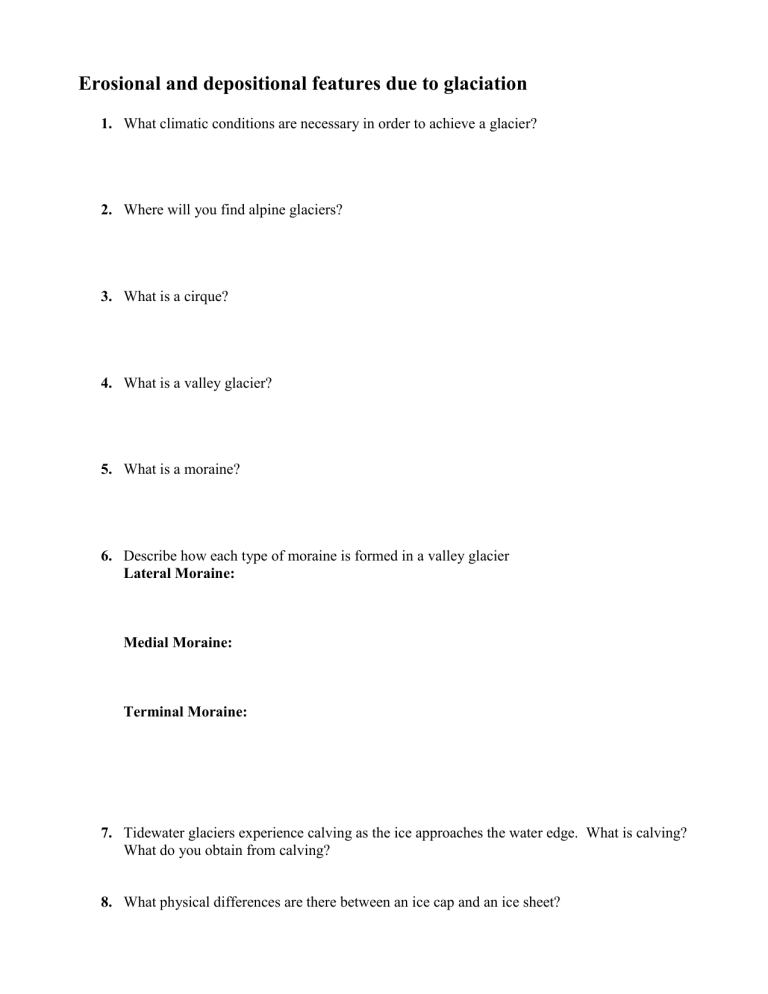
Erosional and depositional features due to glaciation
1.
What climatic conditions are necessary in order to achieve a glacier?
2.
Where will you find alpine glaciers?
3.
What is a cirque?
4.
What is a valley glacier?
5.
What is a moraine?
6.
Describe how each type of moraine is formed in a valley glacier
Lateral Moraine:
Medial Moraine:
Terminal Moraine:
7.
Tidewater glaciers experience calving as the ice approaches the water edge. What is calving?
What do you obtain from calving?
8.
What physical differences are there between an ice cap and an ice sheet?
9.
Define the term firn and describe its role in the formation of a glacier.
10.
Glaciers have two main zones, accumulation zones and ablation zones. Describe these zones as they pertain to glaciers.
11.
What is a crevasse and how are they formed?
12.
Describe the processes of glacial quarrying and glacial abrasion as they pertain to the erosion of the rock face due to basal sliding.
13.
What are striations and how do they tell the direction of the glaciers motion?
14.
Describe the main features of the following terms:
Striations:
Cirque:
Arete:
Peidmont Glacier:
Horn:
Till:
Hanging Valley:
Examine the following photos. Label each using one of the following terms:
Calving glacier
Cirque
Moraine
Glacial valley
Glacial abrasion
Striations
A:
B:
C:
D:
E:
F:




